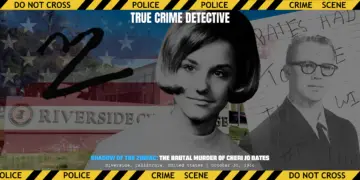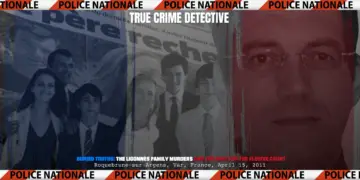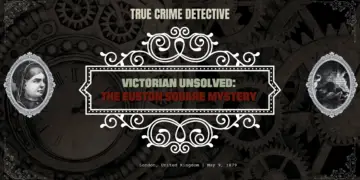
Review: Gone in the Night: The Story of the Springfield Three
Alan and Brian Brown’s Gone in the Night delves into the enduring mystery of the Springfield Three, a case that has haunted the town of Springfield, Missouri, since 1992. On that fateful night, recent high school graduates Stacy McCall and Suzie Streeter, along with Suzie’s mother, Sherrill Levitt, disappeared without a trace. Over the years, this unsolved case has become part of the town’s collective psyche, giving rise to speculation and theories in the absence of concrete answers. In this book, the Browns take a bold and unconventional approach, intertwining true crime with fiction to explore the emotional and psychological depths of this unresolved tragedy.
The narrative is structured around a fictional journalist, Brian Brown, who returns to Springfield during the COVID-19 pandemic to interview a quirky private investigator, Booger McClain. Together, they navigate the mysteries of the case, examining known evidence, local lore, and unsettling theories. This unique storytelling device attempts to draw readers closer to the heart of the investigation, capturing the frustration, fear, and faint hope that have characterised the case for over thirty years. However, this blend of fact and fiction will be divisive.
A Unique Approach to True Crime
The Browns’ decision to fictionalise the investigation sets Gone in the Night apart from other books in the true crime genre. By introducing characters such as journalist Brian Brown and private investigator Booger McClain, the authors create a narrative-driven exploration of the case, allowing readers to immerse themselves in the unfolding story. For some, this imaginative approach will draw them into the emotional core of the tragedyand the presentation of the numerous theories surrounding the women’s disappearance is good, making the book both engaging and thought-provoking.
Nevertheless, this fictional framework also raises concerns and the merging of fact from fiction means there is a lack of clarity which in turn undermines its credibility. While the storytelling offers a fresh perspective, it sometimes obscures the objectivity expected from true crime narratives. Equally, there are moral questions as to whether a modern case such as this, where friends and family are still living, is a suitable subject for fictionalisation. However, despite this, there is nothing offensive in teh content itself and the text is a respectful tribute to the Springfield Three, shedding light on the broader emotional impact of their disappearance.
Fact Meets Fiction
The fusion of fact and fiction in Gone in the Night is both its most intriguing feature and its greatest shortcoming. For readers accustomed to the meticulous detail of investigative true crime, the fictionalised framework will be disappointing. As might be expected, the authors’ own fictional creations, particularly Booger McClain, overshadow the real-life elements of the case. Yet, for those less focused on journalistic precision, the Browns’ storytelling will provide a refreshing take on a decades-old mystery. By humanising the investigation through their fictional characters, the authors also create a space for readers to reflect on the tragedy’s broader implications. While this approach may not appeal to every true crime enthusiast, it undeniably adds an emotional resonance, breathing new life into a case that has remained unresolved for so long.
Strengths and Shortcomings
Where Gone in the Night truly excels is in its evocative storytelling. The Browns successfully create a gripping atmosphere, weaving together local lore and haunting theories into a narrative that keeps readers engaged. For those willing to accept its fictional elements, the book offers a fresh and emotionally charged perspective on a case that has baffled investigators for decades. However, the book is not without its flaws. Numerous typos, factual inconsistencies, and lapses in editing distract from the story. Additionally, the lack of fresh insights or investigative depth will leave many disappointed. While the Browns’ storytelling is undeniably engaging, it ultimately falls short of delivering the answers that readers long for.
Final Verdict
Gone in the Night: The Story of the Springfield Three is a polarising work that straddles the line between true crime and fiction. For readers seeking a meticulously factual account, the fictional elements and absence of new evidence may prove frustrating. However, for those drawn to the emotional and psychological weight of unsolved mysteries, the Browns offer a deeply human exploration of grief, loss, and the enduring search for answers.
The book’s greatest strength lies in its ability to evoke the haunting legacy of the Springfield Three, ensuring that Stacy McCall, Suzie Streeter, and Sherrill Levitt are not forgotten. Whether viewed as a creative triumph or a missed opportunity, Gone in the Night keeps their story alive, reminding us of the profound impact of unresolved tragedy.
The Review
Gone in the Night: The Story of the Springfield Three
Gone in the Night explores the tragic 1992 disappearance of the Springfield Three, blending true crime and fiction. While its narrative style engages readers emotionally and creatively compiles theories, its lack of investigative depth and unclear fact-fiction boundaries will divide opinion. A polarising tribute to an enduring mystery.
PROS
- Engaging Storytelling
- Creative Approach
- Accessible
- Respectful Tone
CONS
- Fact-Fiction Confusion
- Lack of Depth
- Editing Issues
- Divisive Narrative Device

























 Amazon
Amazon






















